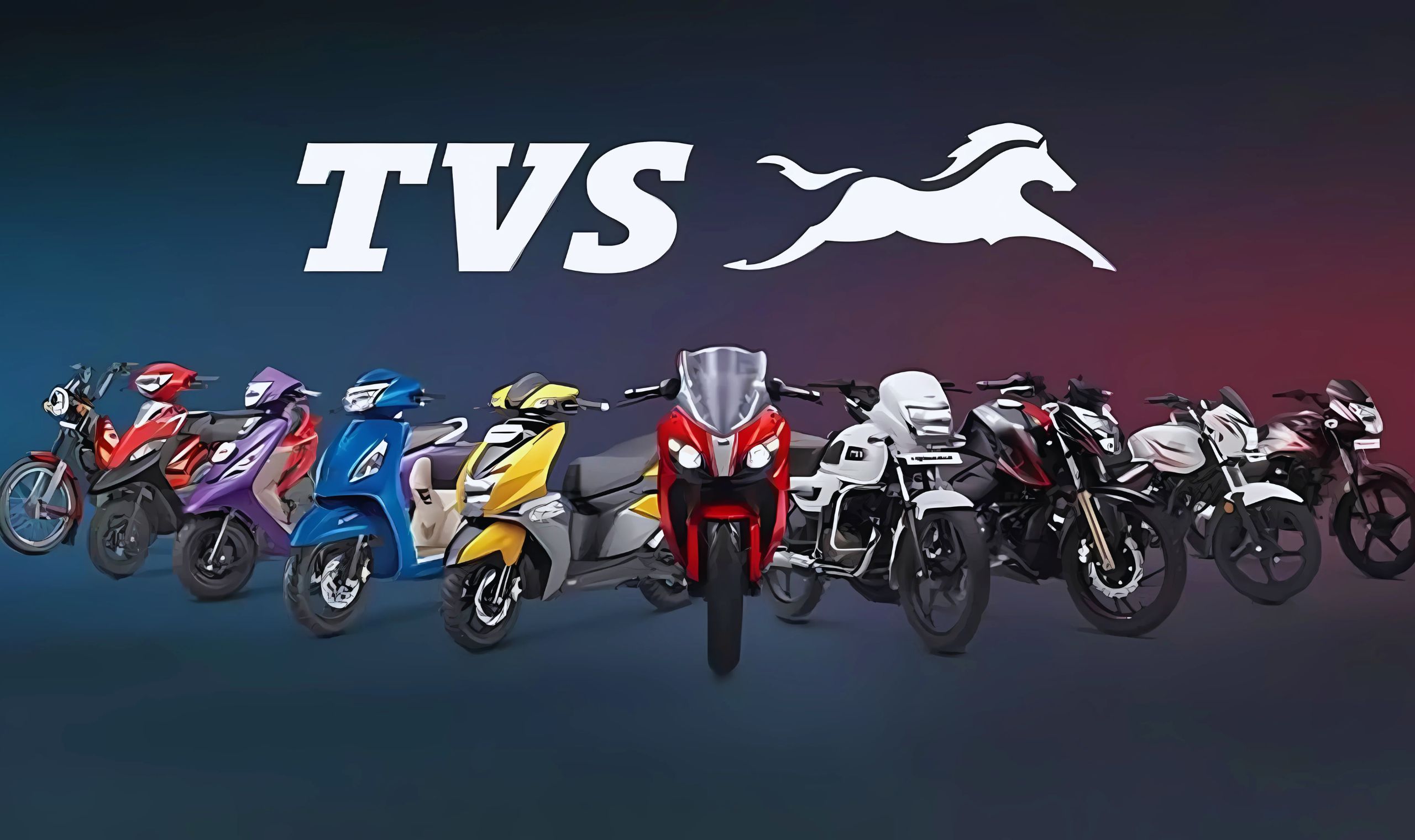TVS Motor Company Limited, one of India’s leading two-wheeler and three-wheeler manufacturers, has been a prominent player in the global automotive industry, known for its innovative motorcycles, scooters, and electric vehicles (EVS). Despite a challenging start to the financial year 2025–26 (FY26), marked by subdued domestic demand and export headwinds, the company remains optimistic about its growth prospects for the remainder of the year. TVS Motor’s confidence stems from its robust performance in FY25, strategic investments in electric mobility, and expectations of a demand revival driven by a favourable monsoon and new product launches. This optimism was highlighted in its Q4 FY25 results announcement on April 28, 2025, and subsequent management commentary, which also addressed challenges in key markets. This article explores TVS Motor’s FY25 performance, the reasons behind the sluggish start to FY26, its growth strategies, and the broader industry context, drawing on recent financial data and market sentiment.
TVS Motor’s FY25 Performance: A Strong Foundation
TVS Motor’s financial year 2024–25 (FY25) was a record-breaking period, with the company achieving its highest-ever sales, revenue, and profit, as noted in a press release shared on X by @marketalertsz on April 28, 2025. According to the company’s filing with the Bombay Stock Exchange (BSE), TVS Motor reported annual revenue of ₹36,251 crore, a 14% year-on-year (YoY) increase from ₹31,974 crore in FY24. Profit before tax (PBT) surged 31% to ₹3,629 crore, while net profit rose to ₹2,711 crore from ₹2,083 crore, reflecting strong operational efficiency.
Segment-Wise Performance
TVS Motor’s product portfolio spans motorcycles, scooters, mopeds, and EVS, with scooters and EVS being key growth drivers in FY25. Scooter sales grew 21% YoY, fueled by strong demand for models like the TVS Jupiter and Ntorq, while EV sales surged 44% YoY, led by the TVS iQube electric scooter. The company’s EV penetration in the two-wheeler segment reached 6.2% in FY25, a significant milestone in its electrification journey.
Operational Highlights
TVS Motor’s operational efficiency was a key factor in its FY25 success. The company maintained consistent EBITDA margin growth for nearly a decade, with Q4 FY25 marking a high of 14%. This was driven by cost optimisation, premiumization of its product portfolio, and favourable raw material prices. The company also expanded its manufacturing capacity and dealer network, strengthening its presence in both domestic and international markets.
Sluggish Start to FY26: Key Challenges
Despite the strong FY25 performance, TVS Motor faced a slower-than-expected start to FY26, with April 2025 sales reflecting cautious consumer sentiment. Management commentary, as reported by CNBC TV18 on April 29, 2025, indicated caution on near-term growth due to several factors:
- Subdued Domestic Demand: Rural demand, a critical driver for two-wheelers, remained weak in April 2025, impacted by uneven monsoon expectations and higher financing costs. Replacement demand, which typically boosts sales, was also tepid, though management anticipates a revival with a better monsoon.
- Export Headwinds: Geopolitical challenges in West Asian markets continued to disrupt exports, with currency depreciation and logistical issues affecting volumes. While Latin American markets showed promise, overall export growth was muted.
- Rising Input Costs: Although raw material prices were favourable in FY25, early signs of commodity price inflation in FY26, particularly for steel and aluminium, raised concerns about margin pressures.
- Competitive Pressures: The two-wheeler market, especially in the EV segment, is becoming increasingly competitive, with players like Bajaj Auto, Hero MotoCorp, and Ola Electric intensifying their focus on electric scooters. TVS Motor’s iQube faces competition from Ola’s S1 series and Bajaj’s Chetak.
These challenges contributed to a 2.91% drop in TVS Motor’s stock price on April 29, 2025, despite the strong Q4 FY25 results, as investors reacted to the cautious management outlook. The stock closed at ₹2,250 on the National Stock Exchange (NSE), down from its intraday high of ₹2,320.
Management’s Optimistic Outlook for FY26
Despite the sluggish start, TVS Motor’s management remains confident about stronger growth in FY26, driven by strategic initiatives and improving market conditions. Key factors underpinning this optimism include:
1. New Product Launches
TVS Motor plans to launch new electric vehicles in the coming quarters, including an advanced version of the iQube and potentially a new electric motorcycle, as highlighted in the Q4 conference call. The company is also developing a new electric scooter, currently in the final stages, which is expected to enhance its EV portfolio. These launches aim to capitalise on the growing demand for EVS, with India’s two-wheeler EV penetration projected to reach 10% by FY27.
In the internal combustion engine (ICE) segment, TVS Motor is set to introduce updated versions of its Apache and Jupiter models, targeting urban and semi-urban markets. These launches are expected to drive volume growth in the second half of FY26.
2. Favourable Monsoon Expectations
Management anticipates a demand revival driven by a better monsoon in 2025, which would boost rural incomes and two-wheeler replacement demand. The India Meteorological Department’s forecast of an above-average monsoon in 2025 supports this outlook, as rural markets account for nearly 50% of TVS Motor’s domestic sales.
3. EV Strategy and Infrastructure
TVS Motor’s bullish stance on EVS is a cornerstone of its FY26 growth plan. The company aims to increase its EV penetration to 8–10% by the end of FY26, supported by investments in battery technology and charging infrastructure. The iQube’s success, with a 44% YoY sales increase in FY25, positions TVS Motor as a leader in the electric scooter segment. Partnerships with BMW Motorrad for EV development further enhance its technological edge.
4. Export Market Recovery
While West Asian exports face challenges, TVS Motor is optimistic about growth in Latin America, Africa, and Southeast Asia. The company is diversifying its export markets to mitigate risks and expects a gradual recovery in global demand as geopolitical tensions ease.
5. Operational Efficiency
TVS Motor’s focus on cost management and premiumization is expected to sustain margin growth. The company plans to leverage economies of scale and optimise its supply chain to counter rising input costs, ensuring EBITDA margins remain above 13% in FY26.
Market and Investor Sentiment
The market’s reaction to TVS Motor’s Q4 FY25 results and FY26 outlook was mixed. While the strong financial performance drove positive sentiment, the cautious guidance led to a sell-off, with shares dropping 2.91% on April 29, 2025. Posts on X reflected varied investor perspectives. @SmarTradingA praised TVS Motor’s EV growth and consistent margin expansion, maintaining a bullish stance, while @marketalertsz highlighted the record-breaking FY25 results as a sign of long-term potential. However, some users expressed concerns about export challenges and competitive pressures in the EV segment.
Analysts remain largely positive. Motilal Oswal Financial Services reiterated a “Buy” rating with a target price of ₹2,600, citing TVS Motor’s EV leadership and export potential. ICICI Securities set a target of ₹2,450, emphasising the company’s diversified portfolio and operational efficiency. The consensus target price, as per Bloomberg data, stands at ₹2,500, implying a 10–12% upside from current levels.
Industry Context: Two-Wheeler and EV Market Trends
TVS Motor operates in a dynamic two-wheeler market, which is undergoing a significant transformation driven by electrification and changing consumer preferences. India’s two-wheeler market, the largest globally by volume, recorded sales of 18.5 million units in FY25, with scooters and EVS gaining market share. The EV segment grew 30% YoY, driven by government incentives under the FAME-III scheme and increasing fuel prices.
However, challenges persist. Rising interest rates and vehicle financing costs have impacted affordability, particularly in rural markets. Competition in the EV space is intensifying, with Ola Electric leading the electric scooter market with a 35% share, followed by TVS Motor and Bajaj Auto. Global players like Ather Energy are also scaling up, adding to pricing pressures.
Despite these challenges, the long-term outlook for India’s two-wheeler market is positive. The government’s push for EV adoption, with a target of 30% EV penetration by 2030, and investments in charging infrastructure bode well for companies like TVS Motor. The company’s focus on premium motorcycles and scooters also aligns with the growing urban demand for high-performance vehicles.
Strategic Initiatives for FY26
To achieve stronger growth in FY26, TVS Motor is focusing on several strategic priorities:
- Product Innovation: Accelerating EV launches and refreshing ICE models to capture market share in both urban and rural segments.
- Digital Transformation: Enhancing its digital sales platform, TVS SmartXonnect, to improve customer engagement and streamline financing.
- Global Expansion: Strengthening its presence in high-growth markets like Latin America and Africa, while addressing challenges in West Asia.
- Sustainability: Investing in sustainable manufacturing practices and battery recycling to align with global ESG standards.
- Partnerships: Deepening collaborations with BMW Motorrad and exploring new tie-ups for EV technology development.
These initiatives position TVS Motor to capitalise on emerging opportunities while addressing near-term challenges.
Risks and Considerations
While TVS Motor’s outlook is positive, several risks could impact its FY26 performance:
- Demand Uncertainty: A weaker-than-expected monsoon or prolonged rural slowdown could dampen sales.
- Commodity Price Volatility: Rising raw material costs could pressure margins if not offset by price hikes or cost efficiencies.
- Competitive Intensity: Aggressive pricing by EV competitors could erode TVS Motor’s market share.
- Export Challenges: Ongoing geopolitical issues in key markets could disrupt export growth.
Investors are advised to monitor these risks and consult financial advisors, as emphasized by sources like Moneycontrol and Business Standard.
Conclusion
TVS Motor’s expectations of stronger growth in FY26, despite a sluggish start, are grounded in its stellar FY25 performance, strategic focus on EVS, and anticipated demand revival. The company’s record-breaking revenue of ₹36,251 crore and net profit of ₹2,711 crore in FY25, coupled with a 44% surge in EV sales, highlight its resilience and growth potential. While challenges like subdued rural demand, export headwinds, and competitive pressures persist, TVS Motor’s plans for new product launches, EV expansion, and operational efficiency provide a solid foundation for recovery.















0 Comments